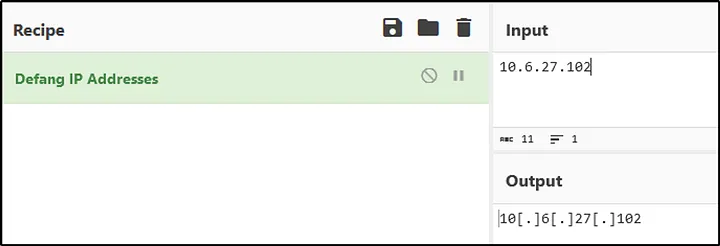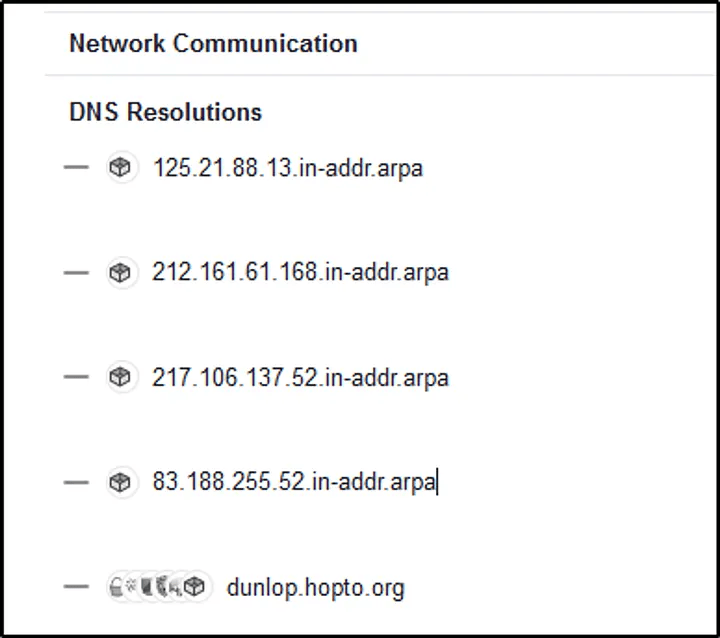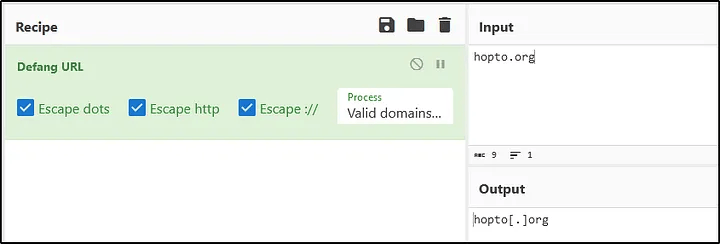📝 Case Study: Zeek
🔹 Overview
This case study focuses on analyzing PCAPs with Zeek to investigate suspicious alerts such as DNS tunneling, phishing attempts, and Log4j exploitation. I used Zeek logs (dns.log, conn.log, http.log, etc.) and custom scripts to extract artifacts, validate alerts, and confirm whether they were true positives.
🚨 Task 2: Anomalous DNS
Alert: Anomalous DNS Activity I was assigned to verify the DNS tunneling alert by analyzing the provided PCAP and Zeek logs.
Q1: What is the number of DNS records linked to the IPv6 address?
Answer: 320
How I did it: I processed the PCAP with Zeek, then used zeek-cut to extract record types and count them.
zeek -C -r dns-tunneling.pcap cat dns.log | zeek-cut qtype_name | sort | uniq -c
The output showed a large number of AAAA records, which are linked to IPv6.
Q2: What is the longest connection duration?
Answer: 9.420791
How I did it: I examined conn.log and sorted by duration to find the longest one.
| cat conn.log | zeek-cut duration | sort -r | head -n 1 |


Q3: What is the number of unique domain queries?
Answer: 6
How I did it: At first, the DNS queries contained repetitive subdomains (e.g., *.cisco-update.com). I extracted only the base domains by reversing, cutting, and filtering duplicates:
| cat dns.log | zeek-cut query | rev | cut -d ‘.’ -f 1-2 | rev | sort | uniq | wc -l |
This gave me the count of unique domains.

Q4: What is the IP address of the source host?
Answer: 10.20.57.3
How I did it: I checked the source IPs in conn.log.
| cat conn.log | zeek-cut id.orig_h | sort | uniq -c |
The result showed one suspicious host repeatedly making DNS queries: 10.20.57.3.

🚨 Task 3: Phishing
Alert: Phishing Attempt I analyzed the phishing PCAP to extract the source IP, malicious domains, and associated files.
Q1: What is the suspicious source address?
Answer: 10[.]6[.]27[.]102
How I did it: I ran Zeek on the phishing PCAP and listed the unique origin hosts.
zeek -Cr phishing.pcap cat conn.log | zeek-cut id.orig_h | sort | uniq -c
Only one IP address appeared: 10.6.27.102. I defanged it for reporting: 10[.]6[.]27[.]102.


Q2: Which domain address were the malicious files downloaded from?
Answer: smart-fax[.]com
How I did it: I looked into http.log and extracted hostnames:
| cat http.log | zeek-cut uri host |
This revealed the malicious downloads originated from smart-fax.com.

Q3: What kind of file is associated with the malicious document?
Answer: VBA
How I did it: I hashed files using the Zeek script hash-demo.zeek:
zeek -Cr phishing.pcap hash-demo.zeek cat files.log | zeek-cut mime_type md5
I took the MD5 hash, uploaded it to VirusTotal, and confirmed the document contained VBA macros.
Q4: What is the given file name of the malicious .exe on VirusTotal?
Answer: PleaseWaitWindow.exe
How I did it: From the same files.log, I grabbed the MD5 hash of the .exe. Checking VirusTotal showed the filename PleaseWaitWindow.exe.
Q5: What is the contacted domain name by the malicious .exe?
Answer: hopto[.]org
How I did it: On VirusTotal under the Behavior tab, I found that the .exe attempted to connect to hopto.org.


Q6: What is the request name of the downloaded malicious .exe file?
Answer: knr.exe
How I did it: By reviewing the earlier http.log extraction, I saw the requested file was knr.exe.
🚨 Task 4: Log4j Exploitation
Alert: Log4J Exploitation Attempt I analyzed the provided PCAP with a custom detection script.
Q1: What is the number of signature hits?
Answer: 3
How I did it: I ran Zeek with the detection-log4j.zeek script and checked the signature log:
zeek -Cr log4shell.pcapng detection-log4j.zeek cat signatures.log | zeek-cut sig_id | wc -l
Q2: Which tool is used for scanning?
Answer: Nmap
How I did it: I checked http.log for user-agents:
| cat http.log | zeek-cut user_agent | sort | uniq -c |
It revealed Nmap as the scanner.
Q3: What is the extension of the exploit file?
Answer: .class
How I did it: I listed URIs in http.log:
| cat http.log | zeek-cut uri | sort | uniq |
The exploit file had the .class extension.
Q4: What is the name of the created file from base64 commands?
Answer: pwned
How I did it: I extracted base64 values from log4j.log and decoded them:
| cat log4j.log | zeek-cut value | grep Base64 |
After decoding, the commands showed the creation of a file named pwned.


✅ Conclusion
In this Zeek case study, I confirmed multiple alerts as true positives:
- DNS tunneling with abnormal AAAA queries and long connections
- Phishing campaign delivering VBA-laced docs and malicious executables
- Log4j exploitation attempts using .class payloads and Nmap scans
I strengthened my ability to:
- Parse Zeek logs efficiently (zeek-cut, sorting, filtering)
- Extract meaningful artifacts for malware analysis
- Use VirusTotal to enrich findings
- Decode obfuscated commands for post-exploitation detection
🔗 Navigation
- Back to Network Security Case Studies